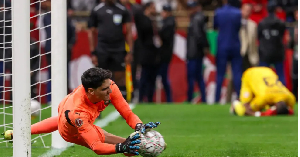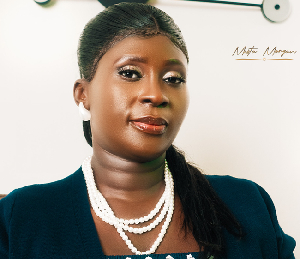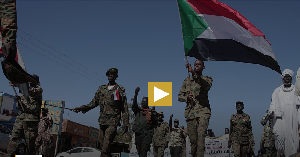It is a common knowledge that the Dagaaba and the Gurune (Frafra) in this country, Ghana, have a very admirable relationship between them. The origin of the relationship is however, very uncertain. Very little is known about how it all started.
Nevertheless, there is a very fascinating legend, which tries to trace the relationship to its very roots. It suggests that, the two tribes also have a link with the Dagomba. Unfortunately, the legend does not account for the relationship with the other ethnic groups, which also belong to the common Mabia ancestry. These other groups are the Birifo, the Mamprusi, the Nankani, the Kussasi, the Waala and of course, the Moshi. My own speculation about these other groups would be that some personal/communal experiences, which they encountered during the period of the migration might have caused the splitting up of the originally single family.
It is believed that the Dagomba, the Gurune (Frafra) and the Dagao were brothers, or rather cousins. They lived somewhere in Southern Africa among the Bantus.
From Southern Africa, they began to migrate northwards through Zimbabwe, Uganda, Rwanda and Kenya. Then, turning westward, they moved to Sierra Leone, Northern Nigeria and finally onto Ghana.
In general, there are some cultural similarities, between the Dagaaba, the Dagomba and the Gurune (Frafra) and some of the people in the countries mentioned. Take for example, the way we get married, bring up children, respect the elderly and bury our dead relatives. The food we eat and the clothing we wear are also good enough indicators of our common origin with the people in those countries. These and other similarities, therefore, seem to indicate some validity in the legend.
Phonetic similarities in some of the names of people in these countries also suggest the plausibility of the legend. For instance, the name 'Abongo' is common both among the Gurune (Frafra) in Ghana and among some of the people in Kenya. Another name like 'Bayuo' or 'Beyuo' is also common among the Dagaaba in Ghana and also among some of the people in Sierra Leone.
The influence of the Hausa language in Dagaare is another obvious example. The word barika for 'thank you' in Dagaare is, in actual fact, a Hausa word. It is hard time we started acknowledging our common origins. They have the potential of uniting us into one harmonious family and initiating peace in our rather troubled society today.
Upon arriving in Ghana, the family settled somewhere in Damongo, south of Tamale, where they exercised their trade in hides and skin. They would usually travel, in turns, to Upper Volta, now Burkina Faso, to buy the items and come back to sell.
The Dagomba was the first to go. He went, bought the items and came back. This suggests the etymological origin of the Dagomba. Da in Dagaare means 'buy' and gbang means 'leather'. Literally, therefore, Dagomba means 'the one goes to buy leather'.
Next to go was the Dagao. He went to Burkina Faso, but did not return. He rather got married and settled there. He became both the chief and the landlord in the locality. In other words, he acted as both the Naa and the Tendaana or the Tengansob in the area where he settled. Etymologically again, Da means 'buy' and gao means 'to lie down' or 'to sleep'. Therefore, Dagao literally means 'the one who goes to buy and sleeps'.
After a long time waiting in vain for the return of the Dagao, the Dagomba decided to send his brother, the Gurune, to Burkina Faso to look for their other lost brother.
In Burkina Faso, he found the brother happily married and doing very well in life. He was the owner of a vast property of farmland and animals. In other words, he was well established and capable of marrying as many as fifty or more wives.
When the two brothers met to discuss the purpose of the visit, it turned out that the visitor, like the host, was not to return in order to give account of his journey to their other brother at home. The Dagao prevented him from doing so. This act of prevention somehow suggests the etymological meaning of the name Gurune. Literally, it means 'the one who is prevented'.
Consequently, Gurune settled with his brother and the two worked together in Burkina Faso. They were both prosperous and hard working. Gurune also got married and the two families continued to live together in harmony.
The Dagao who was, by this time, both the chief and the landowner, decided to share his authority with his brother. He gave the chieftaincy to his brother Gurune but retained the land-ownership. According to tradition, the office of the landowner is more important than that of the chieftaincy, due to its spiritual nature.
A time came when they wanted to perform a thanksgiving sacrifice to God for being so kind to them in their settlement. The Dagao, who was the Tendaana, consulted with the ancestors for the best victim they were to use for the offering. As a result, a dog was adjudged to be the best victim for the sacrifice. However, the sacrifice was to be performed at dawn before sunrise on the D-day.
Knowing very well that it could be difficult to kill a dog at dawn, they decided to kill it in the evening of the appointed date of the sacrifice. The whole victim, however, was not needed for the occasion. They needed only the head and the entrails. So, those essential parts were removed and kept aside for the next morning.
When everybody was asleep during the night, the elder son of the Gurune went and stole the hidden items. He was busy munching his meat when suddenly; the elder son of the Dagao appeared on the scene. The two young men ate all the meat, but decided to hang the skull of the animal at the family shrine.
In the morning of the following day, when all the elders of the family had gathered together for the sacrifice to begin, the Dagao went to retrieve the items, but they were no where to be found. The items had disappeared. It was a great mystery. Consequently, the whole house was searched and the compound swept but to no avail. They found only, what seemed to be the remains of the lost items, the dry bones, hanging over the shrine. They were all drowned in fear and perplexity and wondered what to do.
Then the youngest son of the Gurune appeared with his eyewitness story. He had seen his elder brother and the cousin eating the meat last night. Do you think that the Dagao would accept that his son was a thief? Not at all and far from it! So he rather accused the Gurune's son of stealing the sacrificial items.
This annoyed Gurune so much that he decided to pack out of the house so as to go his own way, with his family. On leaving the house, he threatened his brother that he was going to the east and would prevent the sun from rising.
Fearing what his brother might do, the Dagao also decided to move his family to the west so that he could prevent the sun from setting. That is why the Gurune are found in the east, the Dagomba in the south and the Dagaaba in the west of Northern Ghana.
This legend, in the first place, provides a possible explanation to the existing Dagaaba-Frafra jokes involving 'the dog head'. Secondly, it provides some ideas about the roles of the Tendaana and the Naa among the three ethnic groups - the Dagaaba, the Dagomba and the Gurune.
In a nutshell, a legend may not provide us with factual information, yet it has the capacity to entertain and stimulate critical thinking of its audience. Therefore, I invite you, the reader, to rise up to the challenge and start doing something about the history of your own people or tribe. Ask your elders and they would tell you, search the libraries and you would be amazed with the treasure they possess. Then, put pen to paper and you would be laying a solid foundation for future generations to build on. With sustain and concentric efforts, we are capable of translating our rich oral traditions into well-written and preserved history.














